Easy Sourdough Starter
This Easy Sourdough Starter recipe creates gorgeously fluffy homemade products such as Sourdough Baguettes. Included are simple step by step instructions on how to start, feed and Maintain Sourdough Starter that is perfect for beginners.
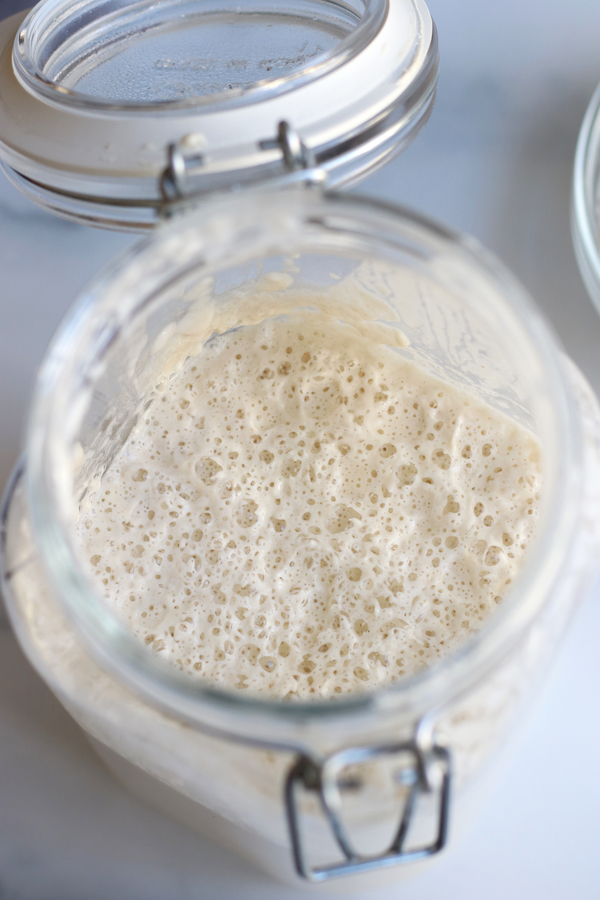
This post may contain affiliate links which I earn a small portion in sales if a purchase is made. Rest assured though, it is never at any additional cost to you.
What is Sourdough Starter
Very simply, sourdough starter is a fermented mixture of two ingredients, water and flour. Wild yeast found in flour flourishes when added to water and is allowed to rest in between feedings. This approach is the old fashioned way of making bread that has been done for centuries. It does require more time than active-dry or instant yeast but produces exceptional taste and textured baked goods.
Tools Needed
In addittion to the flour and water a few tools are needed to make your own from scratch Sourdough Starter.
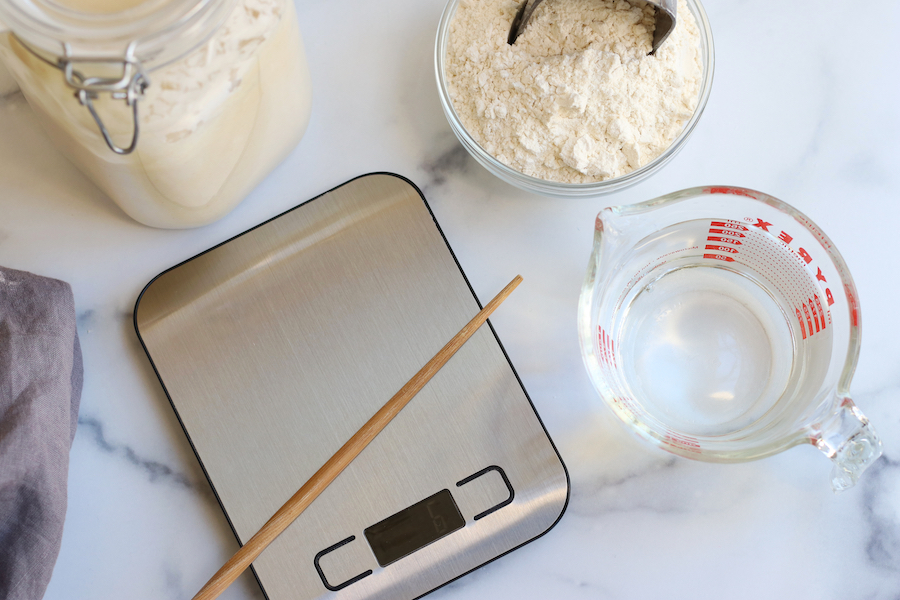
- Kitchen Scale- It is highly encouraged to use a kitchen scale to weigh the flour and water in equals parts to achieve the best results. This is the scale shown in the picture above. However, my next kitchen scale will be a little larger to accommodate the large bowl needed to make sourdough bread.
- Chopsticks– This makes stirring the starter in a glass jar much easier.
- Glass Measuring Cup– Makes for easy pouring of water.
- Scoop or Spoon– Helps with the addittion of flour.
- Medium Sized Glass Bowl– The first few days of a starters life is easier done in a medium size glass bowl.
- Plastic Wrap or Reusable Food Wraps– For the first few days of the starters life.
- Glass Jar (see below)
Sourdough Starter Container
The type of glass jar needed will depend on which type of flour you use to make your starter and how rapidly your starter ferments. This is the jar seen in the photo below and it works beautifully when using white all-purpose flour. Please see section directly below (White Flour vs Wheat Flour) for more explanation.
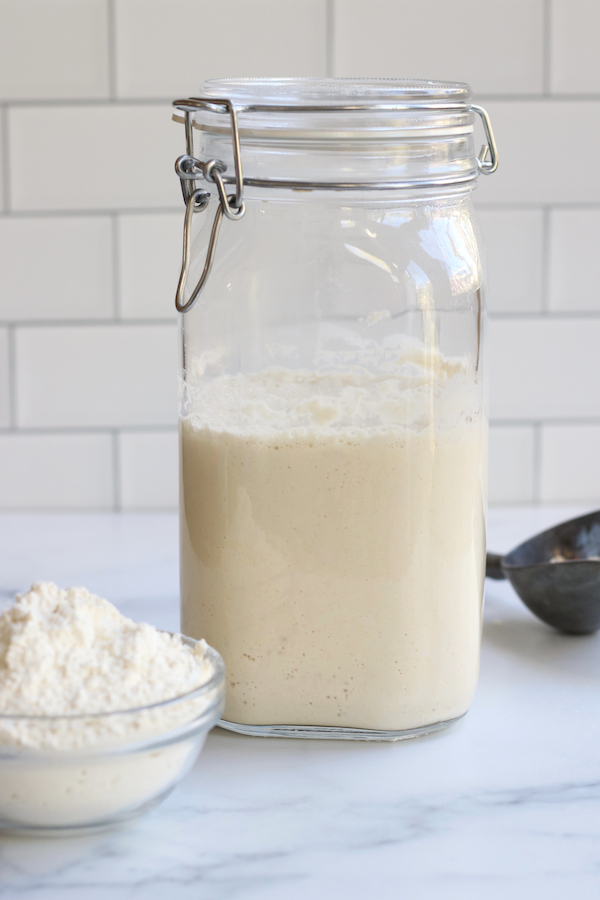
Best Flour for Sourdough Success
For the best sourdough starter, you need flour you can trust. Buying directly from King Arthur Flour means guaranteed freshness, expert-tested quality, and no risk of warehouse mishandling. Plus, you’ll find exclusive products, better stock availability, and support an employee-owned company dedicated to bakers. Skip the third-party markups and get the best right from the source. You and your sourdough deserve it! (affiliate)
White Flour vs Wheat Flour
The type of flour used will have a great influence on how your Stater ferments and the final product that you make with it. However, it is most important to not choose bleached flour as this will impede the fermentation.
All-Purpose White Flour
I adore sourdough bread that bites me back when I eat it. In other words, extra sour with a tang. However, my husband HATES that kind of bread. That is why I use all-purpose white flour for my Starter.
This type of flour yields breads that are very much like a crusty Italian loaf that he and I both go crazy for. Additionally, I use the Starter from this type of flour for making baguettes that then make incredible Homemade Breadcrumbs and croutons. The final products are never overly sour.
Wheat or Rye Flour
Wheat and rye flour has more naturally occurring wild yeast. Because of this, the starter made from these types of flours will ferment faster and with more intensity. It is very important to keep a closer eye on Starters made from these flours and to use a glass jar that has a lid that is looser or can be left slightly open. The reason for this, a tight fitting lid could be a recipe for an exploding jar.
In conclusion, wheat and rye flours will make much stronger sourdough products and all-purpose white flours (unbleached) will yield more mild final products.
How To Make
To make Sourdough Starter that is ready to bake with will take approximately 7 days, give or take a day or two. Here are the instructions for each day.
Day 1
In a medium sized glass bowl mix together 50 grams of water and 50 grams of flour. Stir well and cover. Let sit at room temperature.
Pro Tip#1– To accurately weigh the flour and water start by making sure the scale is weighing in grams vs ounces. Place the bowl on the scale and turn on. The scale should read zero with the the bowl on top. Add enough flour to equal 50 grams. Calibrate the scale back to zero again and repeat with water.
Pro Tip#2– In the making and feeding of this starter there will always be equal parts of flour and water added to it.
Day 2
To yesterday’s mixture add 50 grams of flour and 50 grams of water. Stir well and cover. Let sit at room temperature.
Day 3
Throw away half of the Starter. To the remaining Starter add 100 grams of flour and 100 grams of water. Stir well and cover. Let sit at room temperature.
Pro Tip#3– The discarded Starter from day 3- day 6 is not fully developed enough to have any uses. Simply throw it away.
Day 4
Throw away half of the starter. Add 150 grams of flour and 150 grams of water to the bowl and stir well. Cover and let sit at room temperature.
Pro Tip#4– Day 4 is the day that you will notice the mixture starting to take on the personality of a Sourdough Starter. There should be small bubbles and a slight sour smell will start to take shape.
Day 5
Similar to the previous days, throw away half of the Starter and add 150 grams of flour and 150 grams of water. Stir well, cover and let sit at room temperature.
Pro Tip#5– The Starter should begin to look very similar to picture A below. If not do not worry, it will very soon. Also, feel free to transfer to the glass jar once the new flour and water its mixed in on day 5.
Day 6
Throw away half of the starter and add 200 grams of flour and 200 grams of water. Stir well, cover and let sit at room temperature.
Pro Tip#6– By day 6 the Starter should look similar to photo A below and very possibly look like photo B.
Day 7
On day 7 the Starter should at the least look like photo B if not like photo C. If it has a similar appearance to photo C, it is ready to use. If it looks like photo B, let it sit at room temperature for one additional day.
Feeding and Reviving Sourdough Starter
Above all, if your Starter looks like photo C it is ready to be used for making all kinds of sourdough products. If it looks like photo B, you can still use it for baking. However, it will slow down the rising of bread dough. When it looks like photo A, it is time to feed the Starter.
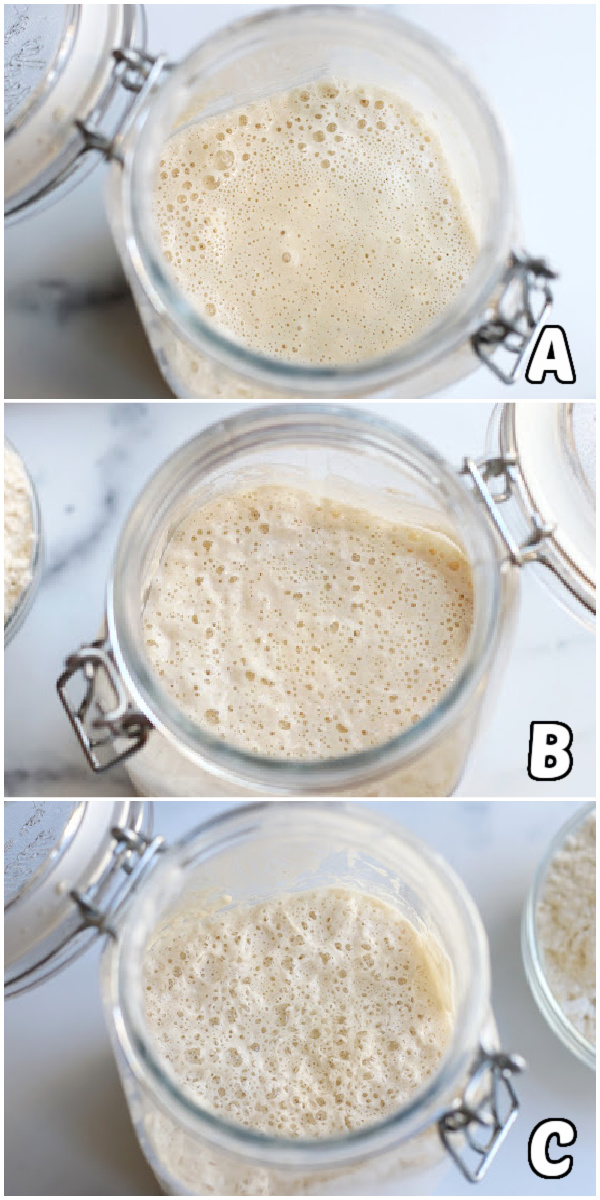
To feed the Sourdough Starter, discard half of it and add 150 grams of flour and 150 grams of water to the remaining Starter. Stir well and let sit at room temperature overnight. If on the second day the Starter has the appearance of photo B, let it sit at room temperature for one additional day before using it in recipes.
Pro Tip#7– If storing the Starter at room temperature it will need to be fed every 2-3 days. If storing in the refrigerator, it can be kept safely for up to 10 days before feeding. Please note that if storing in the refrigerator 2 feedings will most likely be needed before the Starter will look like photo C.
Starter Smell and How to Know if it has Gone Bad
A healthy Sourdough Starter is going to smell sour. Therefore, it is not the best way to judge whether it has gone bad. However, the best way to know is by its appearance. If there are any visible signs of mold or red/orange spots it is time to throw the Starter out and begin again. Take heart though, Sourdough Starters are full of good bacteria. Because of this, chances of it going bad are much lower.
Maintaining Sourdough Starter
For anyone new to sourdough baking, it is incredibly normal to have many questions and concerns about maintaining your sourdough starter. How To Maintain Sourdough Starter has a complete breakdown of the feeding schedule, common concerns and questions so that you can enjoy your sourdough starter for decades to come.
If you enjoyed this Sourdough Starter please let me know by leaving a comment and review below. Doing so helps to encourage others to make the recipe also. Thank you!
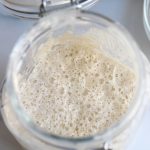
Easy Sourdough Starter
Ingredients
- 700 grams white all-purpose flour *see Note #1 below
- 700 grams filtered water
Instructions
Day 1
- In a medium sized glass bowl mix together 50 grams of water and 50 grams of flour. Stir well and cover. Let sit at room temperature.See Note #2 and Note #3 below.
Day 2
- To yesterday’s mixture add 50 grams of flour and 50 grams of water. Stir well and cover. Let sit at room temperature.
Day 3
- Throw away half of the Starter. To the remaining Starter add 100 grams of flour and 100 grams of water. Stir well and cover. Let sit at room temperature.See Note #3 below.
Day 4
- Throw away half of the starter. Add 150 grams of flour and 150 grams of water to the bowl and stir well. Cover and let sit at room temperature. See Note #4 below.
Day 5
- Similar to the previous days, throw away half of the Starter and add 150 grams of flour and 150 grams of water. Stir well, cover and let sit at room temperature. See Note #5 below.
Day 6
- Throw away half of the starter and add 200 grams of flour and 200 grams of water. Stir well, cover and let sit at room temperature. See Note #6 below.
Day 7
- On day 7 the Starter should at the least look like photo B above if not like photo C. If it has a similar appearance to photo C, it is ready to use. If it looks like photo B, let it sit at room temperature for one additional day.

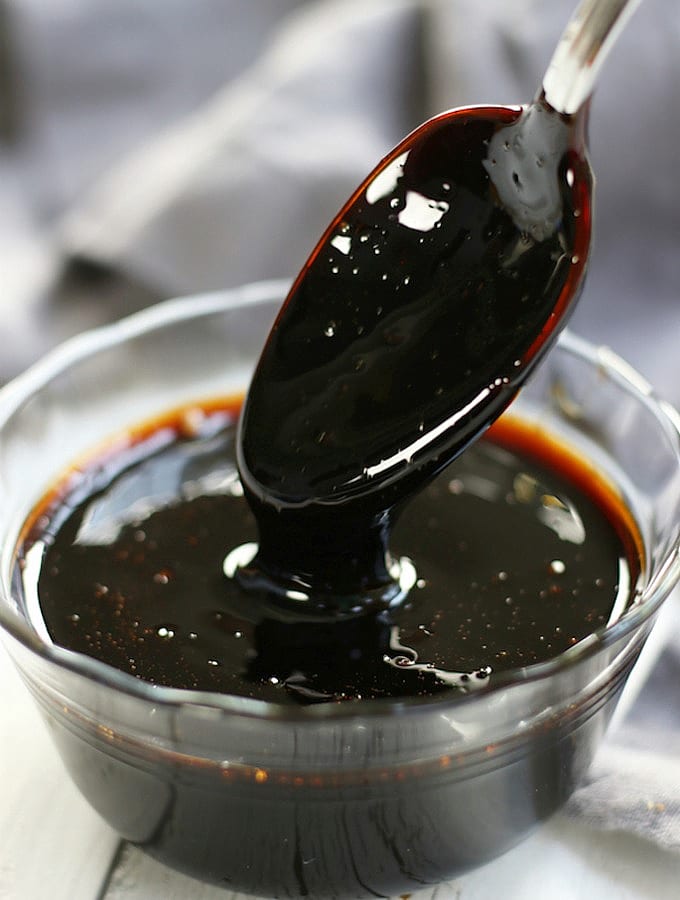

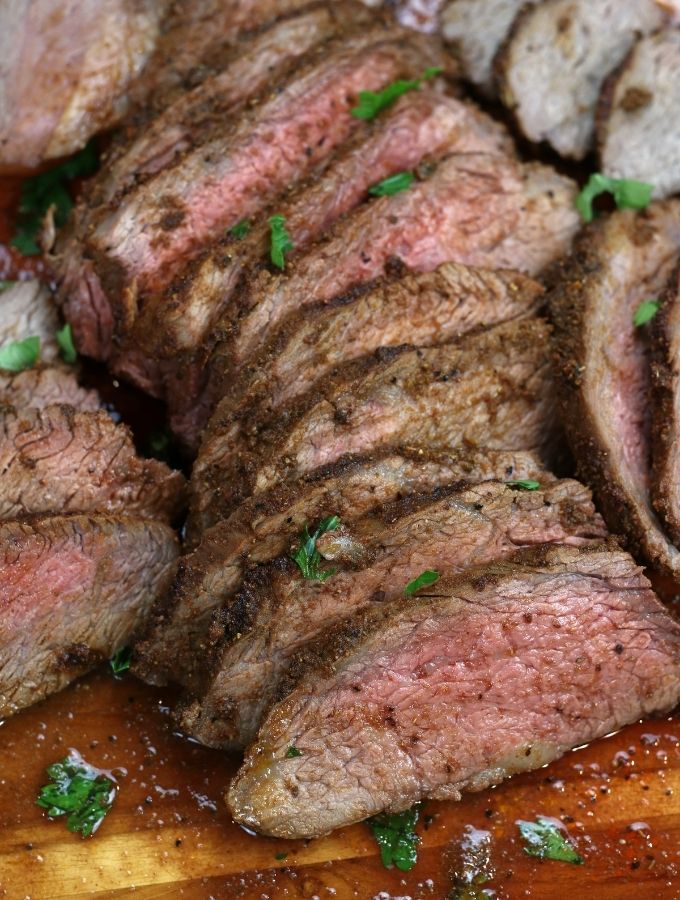
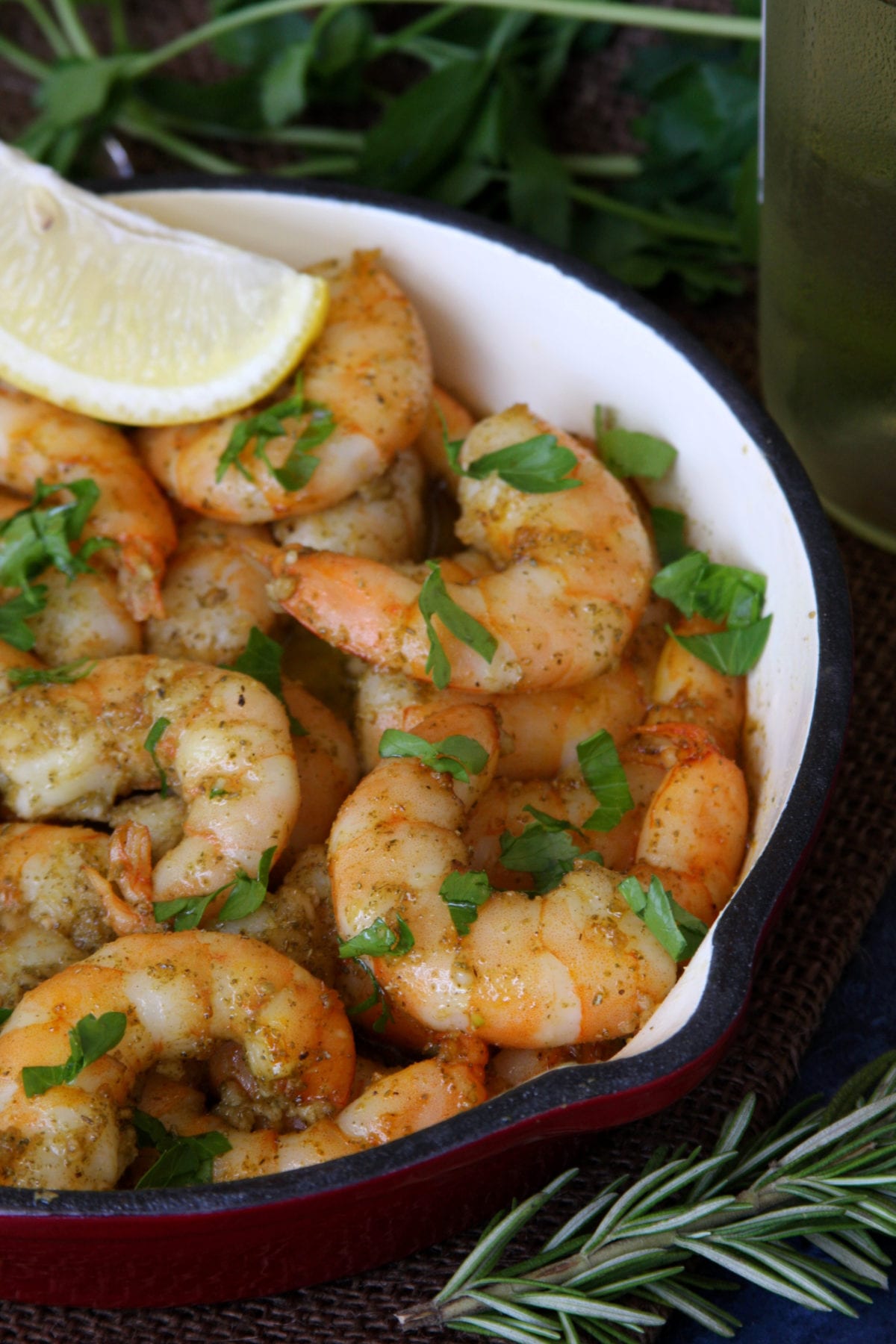
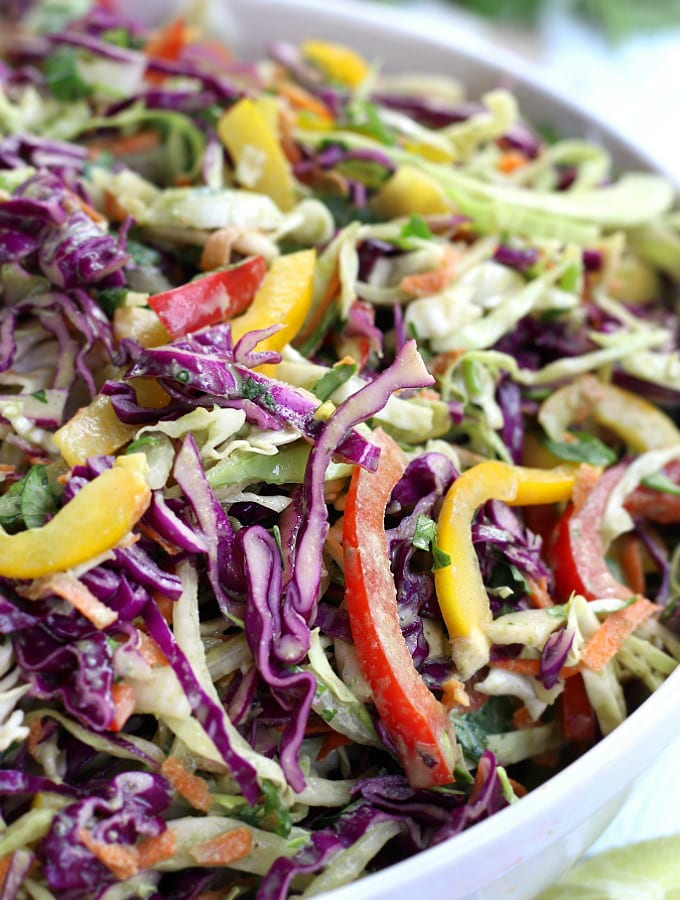
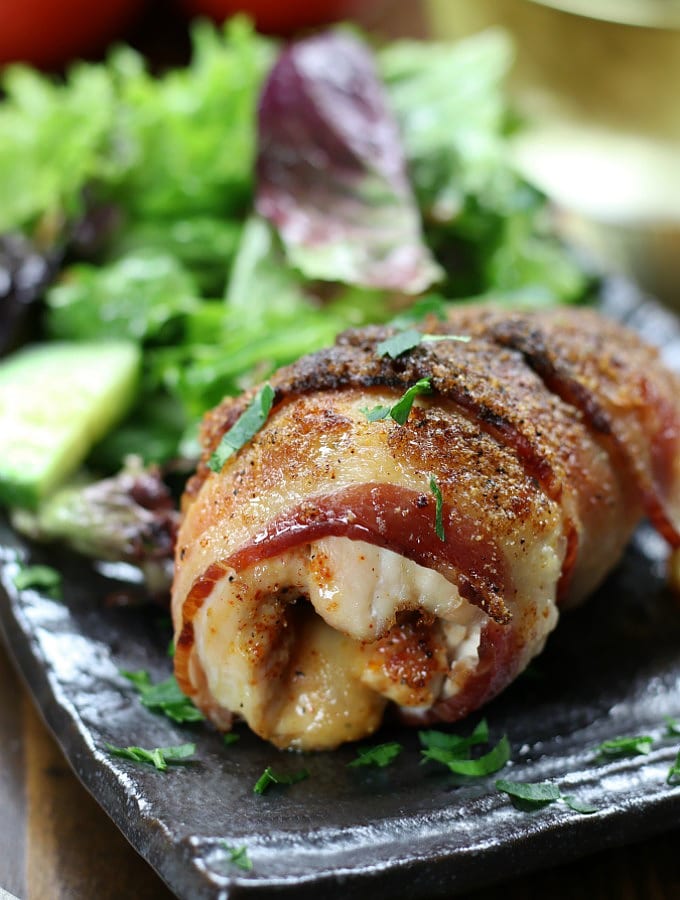
I am excited to try this recipe for the first time!! But I am curious to k kw what size jar should be used to get started?
TIA ☺️
Hi Carla. It’s a 1.5 liter jar and I link to the one I use under the “Sourdough Starter Container” section of the post.
When discarding half, should I mix it first? Or just take the top half? It seems the top is bubbly and thick whereas the bottom half is watery so I have been mixing first before discarding. Is this the correct thing to do?
Hi Moriah. Yes, it is best to give your starter a good stir before discarding half. This ensures that the mixture is well-combined and that the wild yeast and bacteria are evenly distributed, setting you up for a strong, healthy starter. Your approach is spot on—keep up the great work!
Starting my starter tomorrow. Should it be discarded and fed the same time each day? Wish me luck! 😄
Hi Debbie. I’m so excited for you!! Yes, it is generally a good idea to discard and feed the starter around the same time each day but it doesn’t have to be exact because life happens sometimes. I would love to hear how it goes and if you get a chance, this post about maintaining your starter may be helpful also. https://www.thefedupfoodie.com/how-to-maintain-sourdough-starter/
Hi – I’m into the evening now on day 2 and my sourdough starter is currently 3x at the height as when I added the day 2 flour and water at 6 am. Do I do anything different or stay the course? I wasn’t expecting to see her so tall in the jar already😳😬
Hi Rachel. That is wonderful to hear that your starter is thriving already. I recommend to stay the course. Even when a new starter is thriving it needs the full amount of time to mature. This will ensure your bread turns out beautifully fluffy. The only thing I would recommend is to make sure to use a large jar to ensure it doesn’t overflow. Also, this post on maintaining your stater may be helpful. Happy baking! https://www.thefedupfoodie.com/how-to-maintain-sourdough-starter/
Hi, I am new to sour dough starter. it’s the only bread we eat. My question is why do you throw away half of the starter? I’m a little worried about starting, but as soon as I get a jar I’m going to try it. Thank you for all your experience and helpfulness.
Welcome to the wonderful world of sourdough! I totally get your concern about discarding part of the starter—it feels counterintuitive at first. The reason we do it is to keep the balance of flour and water just right for the yeast and bacteria to thrive. If we didn’t, the starter would grow too large, and you’d have to feed it an overwhelming amount of flour to keep it healthy. Once your starter is active and bubbly, you can use that discard in recipes, so nothing goes to waste! I hope you find the process enjoyable, and feel free to reach out with any questions when you start your own. Also you might find this post about maintaining the starter helpful. Happy baking! https://www.thefedupfoodie.com/how-to-maintain-sourdough-starter/
You made this so easy! I’m on day 7, do I still discard half and feed 150/150?
Can I keep the discard this time and use it for something!?
Hi Alicia! I just responded to your previous question but realized I forgot to mention the discard. You can absolutely save it! However, I recommend holding off on using it in recipes until your starter is a bit more mature. Once it’s ready, you’ll be able to use the discard in pancakes, crackers, or even pizza dough for a great tang. I’m also planning to share some sourdough discard recipes soon, so stay tuned!
Hopefully I am not double commenting! I am so excited with how my starter looks today, day7! Thank you for the steps! Now, what do I do after day 7? Do I pull half, keep the discard to use, and add 150 of each? Do I do this daily?
I’m so glad you’re excited about your starter! There’s nothing like fresh, homemade sourdough bread. By Day 7, your starter should be bubbly and doubled in size, ready to use. If it hasn’t quite reached that point, no worries—just continue discarding half and feeding it 150g each of flour and water for another day or two.
For new starters, I recommend feeding it 3-4 times a week for the first six months. Once it matures, you can stretch the time between feedings, but before baking, be sure to feed it for a few days until it’s bubbly and active again. You might also find this post on maintaining your starter helpful! https://www.thefedupfoodie.com/how-to-maintain-sourdough-starter/
Day one for our starter. We are anxious to be able to use it. Thank you for all the very useful information.
Yo.u are very welcome. Please don’t hesitate to reach out with any questions. Also, you may find this post about maintaining your starter helpful. In it I answer some of the most common questions about sourdough starter. https://www.thefedupfoodie.com/how-to-maintain-sourdough-starter/
So tomorrow is day 7 and I’m kind of a little freaked as to what I do next. It looks good. All bubbly and everything but now what do I do to start making bread. This is kind of intimidating when you’re first starting.
Hi Kim. I completely understand how you feel. I always thought I was a horrible bread maker and then I found sourdough. I don’t have a ton of bread recipes up yet but the three that I do are all wonderful places to start. My biggest suggestion is to just make sure your starter is bubbly and well fed before making bread. I would love to hear how it goes and happy baking! https://www.thefedupfoodie.com/sourdough-french-bread/
https://www.thefedupfoodie.com/soft-sourdough-bread/
https://www.thefedupfoodie.com/sourdough-baguettes/
How do you determine “half” when discarding. Do you go by eye? I did this the first time and the next day I poured everything into a separate container with the container tared. I dumped it all into the container, scooped half back into my mason jar, and threw the other half away. Is there a better way?
Hi Lauren. Eyeballing it is definitely the easiest way! Precision isn’t crucial here, so estimating half by eye works just fine. If you prefer a more accurate method, you can weigh it like you did, but it’s not necessary. The goal is to maintain a manageable amount of starter while feeding it fresh flour and water. So, whichever method feels best for you is the right one!
Day 11 and my starter is not yet ready. It’s being discarded and fed every 24 hours. What could be wrong?
Hi Debbie, I understand how frustrating it can be when your starter takes longer than expected. Let’s troubleshoot together! Water quality and flour type play a big role here. If you’re using tap water, try switching to filtered or bottled water, as chlorine can slow things down. Also, make sure your container allows for some airflow; a tightly sealed lid can inhibit fermentation. Lastly, double-check your flour. Bleached flour can hinder the process, so opt for unbleached or even whole wheat flour to give it a boost. This post may also be a helpful resource in troubleshooting. https://www.thefedupfoodie.com/how-to-maintain-sourdough-starter/
Day 12 and the starter is finally alive! What a difference a day makes. It’s bubbly and growing! Time to get baking. Thank you.
I am so glad to hear Debbie! Thank you so much for the update. Also, just like kids, every starter has their own unique personality. Happy baking!
Hi, I am currently on Day 4 and when I went to feed it this morning, it smelled absolutely disgusting. It was so bad that my husband gagged. There is no signs of mold and it is bubbly and active. I just don’t know what to do and I keep reading that it’s starving but I’m not supposed to be anything until tomorrow morning. Any suggestions?
Hi Alexis. That intense smell you’re experiencing is actually pretty normal at this stage, especially around Day 4. Your starter is going through a microbial battle where the good bacteria are developing, and that can cause some funky odors that are, well, not the most pleasant! But don’t worry—it sounds like your starter is healthy since you mentioned it’s bubbly and active with no signs of mold. The first few days can be a little wild, but hang in there! Your starter is on the right track.
Let me know how it goes! 😊
I measured 50 grams of flour rye and 50 grams of water. Is it supposed to be really dry?
Hi Robin. Using rye flour rather than all purpose is great. There will just be a few differences. It’s normal for rye to absorb more water than all-purpose flour, so it may feel a bit drier or thicker. You can add a little more water, a few grams at a time, until it reaches a consistency similar to thick pancake batter. Keep going—you’re on the right track!
Hi!
On day 7 and mine doesn’t look like picture b or c, does it matter that I used unbleached artisan flower instead of all unbleached all purpose flower?
Hi Tess. Using unbleached artisan flour instead of unbleached all-purpose flour shouldn’t cause any major issues, but it can sometimes result in different results because artisan flour can vary in texture and protein content. On day 7, it’s perfectly normal for your starter to not look exactly like the pictures. Some starters take a bit longer to develop that strong activity, especially if you’re in a cooler environment or using a flour with a different protein level. Give it a few more days, keep feeding it regularly, and watch for more bubbles and a sour aroma. You’re on the right track!
Hi, my starter was looking great on day 3 but not it’s very liquidy. It also looks like thin pancake batter. Help please.
Hi Emily. It sounds like your starter is experiencing a normal phase, especially around this point. On Day 3, the activity can surge, and then it may settle down, which is completely normal. My best suggestion is to continue on the schedule. Just keep in mind, it is very normal for new starters to take a day or 2 more of discarding and feeding before it is bubbly and active. Please don’t hesitate to reach out if you have any additional questions. Happy baking!
Once its ready how much do we continue to feed it?
Hi Jessica. Once your starter is bubbly and active, you will use a good portion of it to make bread. Feed the remaining starter 150 grams of both flour and water. That will be your standard approach moving forward after discarding half. This post may be of help as it addresses many of the challenges and questions that pop up for sourdough bakers. Happy baking! https://www.thefedupfoodie.com/how-to-maintain-sourdough-starter/
I’m excited to try sourdough starter and bread for the first time ever. I decided to use organic wheat flour for my first try because I thought there would be less chance to mess up. When I get ready to make bread from the starter, can I use all purpose or bread flour then? I’m on Day 4, but just thinking ahead.
Hi Julia. Welcome to sourdough baking! It’s so much fun. Yes, you can use all-purpose or bread flour when you get ready to bake your sourdough bread! Both are excellent choices for your first loaf. Since you’re starting with organic wheat flour for your starter, it’s good to know that wheat flour will give your starter a strong, active base with plenty of wild yeast and bacteria. When you’re ready to bake, all-purpose flour will give you a lighter texture, while bread flour, with its higher protein content, will give your loaf a bit more structure and chew.
Switching flours from starter to bread is perfectly fine. Just be sure your starter is bubbly and active when you begin baking—that’s the most important part! You’re doing great for Day 4, and it sounds like you’re well on your way to some delicious bread!
Thank you for this!
Question, how do I continue to feed the starter after day day 7?
Hi Cindy. You are very welcome. Once your starter is bubbly and active, you will use a good portion of it to make bread. Feed the remaining starter 150 grams of both flour and water. That will be your standard approach moving forward after discarding half. This post may be of help as it addresses many of the challenges and questions that pop up for sourdough bakers. Happy baking! https://www.thefedupfoodie.com/how-to-maintain-sourdough-starter/
Hi Heather–I’m about to start the process but am a little concerned about the room temp. My house is chilly at the moment because we are in between seasons; it’s not even 68 degrees. Will this just slow everything down a day or two or impede growth altogether?
HI Caron. No need to worry too much with cooler room temps, like below 68 degrees, will just slow down the fermentation process a bit, but it won’t stop the growth altogether. It may take an extra day or two for your starter to get as bubbly and active, but that’s totally normal. Just keep feeding it as directed, and you’ll get there!
Feel free to reach out if you have any other questions and I would love to hear how it is going.
On day 4 my starter exploded and I had to transfer to a larger bowl. Today is day 4 and it’s even larger and whoa, is it starting to smell sour! I’ve done this before and never had this quick of a reaction. My kitchen is always pretty steady at 70 degrees, I don’t think too warm. I’m using unbleached white flour, room temperature filtered water. Should I be concerned with the rapid fermentation?
Hi Sandie. It sounds like your starter is super active, which can happen from time to time, especially if the natural yeast in your environment is really thriving. Since your kitchen is a steady 70°F and you’re using room temperature water and unbleached white flour, you’re doing everything right! Rapid fermentation isn’t necessarily a bad thing, but it can sometimes mean the yeast is a bit more vigorous than usual.
I’d recommend transferring it to a larger container to give it room to grow. You can also stir it down or feed it a little earlier if you notice it getting too bubbly. The sour smell is a good sign—just keep an eye on it, and you should be fine!
Your starter is definitely on the right track!